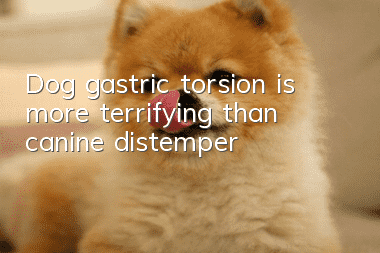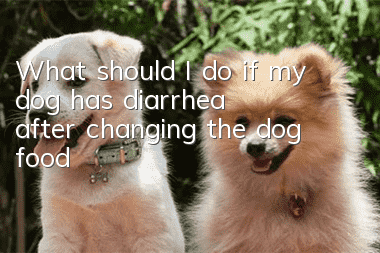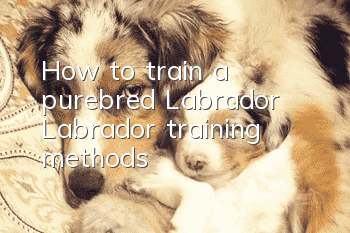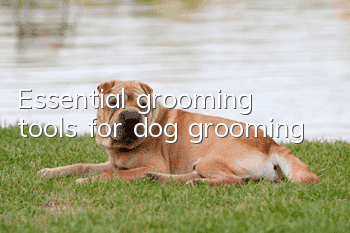Dog gastric torsion is more terrifying than canine distemper

Maybe the term gastric torsion in dogs is a bit unfamiliar to you, but the probability of it happening in dogs is not low. For the sake of convenience in daily life, many people will first feed their dogs and then take them out for exercise; or when the weather is hot, their dogs will drink a lot of water immediately after returning home from exercise. These behaviors will have a high chance of causing gastric torsion in dogs!
1. What is gastric torsion
The stomach is turned over due to a huge external impact. There are ligaments connecting the spleen and stomach, so generally the spleen and stomach will twist together.
After gastric torsion, the inability of blood to pass through will cause ischemia and trauma to other internal organs, resulting in necrosis and eventually shock and death. Once gastric torsion occurs, the dog's physical condition will deteriorate rapidly, his life will be critical, and he may even die within a few hours. Even for dogs with treatment, the mortality rate is as high as 25-33%, and there is a 50% chance that survivors will not fully recover.
2. Causes of gastric torsion
Generally speaking, this is related to the motility of the stomach, and breed and genetics are also closely related to this disease.
1. When a dog’s stomach is empty, it will not shake and turn over. Once the stomach is heavy (for example, after eating a lot, drinking a lot of water, and then panting rapidly, causing too much air in the stomach), and there is a huge external force that makes the stomach shake, it will happen. Gastric volvulus may develop.
2. Huge psychological pressure can also cause gastric torsion, such as: dog competitions, mating, giving birth to puppies, boarding, just arriving at a new home, etc.
3. Other factors that may lead to gastric torsion
1) Age. Older dogs are prone to gastric torsion. Dogs over 7 years old are twice as likely to develop gastric torsion as dogs between 2 and 4 years old.
2) Gender. Male dogs are more likely to develop gastric torsion.
3) Body shape. Slender dogs are more susceptible to gastric torsion.
4) Temperament. Dogs who are more anxious, nervous, and easily fearful are more likely to suffer from gastric torsion.
3. Symptoms of gastric torsion
Irritability; retching (constantly wanting to vomit but unable to vomit); whitening of the mouth and gums; hardening, swelling and pain in the abdomen; excessive drooling; arched back; enlarged spleen; shortness of breath or difficulty; shock, etc.
IV. Dog breeds prone to gastric torsion
It usually occurs in large and giant deep-chested dogs, and less commonly in small dogs and cats. Because large dogs are strong, the stomach has more room for movement in the abdominal cavity. When there is food or water in the stomach, it is easy to cause the stomach to shake significantly during strenuous exercise.
Among the dog breeds prone to the disease, there are Great Danes, German Shepherds, Golden Retrievers, etc.
5. Treatment and treatment of gastric torsion
When a dog develops gastric torsion, don’t hesitate and seek medical attention immediately.
6. Methods to avoid gastric torsion
Gastric torsion is not a chronic disease and has no warning signs. But by paying attention to the following points, you can avoid gastric torsion in dogs as much as possible.
1. Feed the dog regularly and quantitatively, and do not let the dog eat too much. Especially for large dogs, don’t let them eat a lot after being hungry for a long time. This feeding method is very unhealthy for the dog’s stomach and will also increase the probability of the dog’s gastric torsion.
2. Avoid letting your dog eat too quickly.
3. Give your dog plenty of water, but avoid drinking a lot of water after meals. Drinking water will expand the food, which will increase the burden on the dog's stomach and increase the possibility of gastric torsion.
4. Avoid letting the dog do strenuous exercise one hour before or two hours after the meal, or do things that will make the dog feel nervous.
5. Avoid feeding foods that may produce gas, such as soybeans, peas, etc.
6. If you want to change the type of feed, you can slowly allow the dog to adapt to it for 3-5 days.
7. Don’t feed too much food at one time. It’s best to divide it into 2-3 meals.
8. Dog breeds that may occur are best fed alone and in a quiet place.
In conclusion, if you pay attention to your dog’s healthy diet and healthy and scientific feeding, the possibility of your dog suffering from gastric torsion is still very low. If unfortunately, an accident occurs, please seek medical attention as quickly as possible. The sooner you are diagnosed and treated in the hospital, the higher the chance of recovery.
- How to train a Cane Corso cub? How to train a Cane Corso cub!
- Why doesn’t a dog resist when its owner punishes it?
- What causes picky eating in dogs and how to improve picky eating in dogs
- Will dogs stick out their tongues when they have a cold? What's going on?
- What should I do if my black and tan coonhound has body odor?
- Will rabies definitely occur?
- What causes dry eye in dogs
- Akita dog bathing methods and precautions
- How to prevent dog heatstroke in summer
- What is the reason for serious hair loss in Pomeranian?



